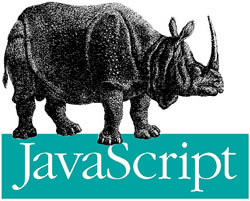Difference between JavaScript and jQuery
Key difference: Even though their names suggest that Java and JavaScript must be related somehow, it is just not true. JavaScript is an interpreted computer programming language. The main difference between Java and JavaScript is that while Java is a programming language, JavaScript is scripting language. It is a prototype-based scripting language that is dynamic, weakly typed, and has first-class functions. jQuery, on the other hand, is a multi-browser JavaScript library. jQuery is a free, open source software. It is licensed under the MIT License. It was designed to simplify the client-side scripting of HTML and is currently used by numerous websites.
 Even though their names suggest that Java and JavaScript must be related somehow, it is just not true. JavaScript is an interpreted computer programming language. The main difference between Java and JavaScript is that while Java is a programming language, JavaScript is scripting language. It is a prototype-based scripting language that is dynamic, weakly typed, and has first-class functions. However, like Java, JavaScript is heavily influenced by the C programming language. JavaScript also borrows many names and naming conventions from Java, but it does have very different semantics than Java.
Even though their names suggest that Java and JavaScript must be related somehow, it is just not true. JavaScript is an interpreted computer programming language. The main difference between Java and JavaScript is that while Java is a programming language, JavaScript is scripting language. It is a prototype-based scripting language that is dynamic, weakly typed, and has first-class functions. However, like Java, JavaScript is heavily influenced by the C programming language. JavaScript also borrows many names and naming conventions from Java, but it does have very different semantics than Java.
JavaScript takes its key design principles from the Self and Scheme programming languages. It is a multi-paradigm language that supports object-oriented, imperative, and functional programming styles.
JavaScript was formalized in the ECMAScript language standard and was originally implemented as part of web browsers. It allowed client-side scripts to interact with the user, control the browser, communicate asynchronously, and alter the document content that was displayed. However, JavaScript is also used in applications outside of web pages, such as in PDF documents, site-specific browsers, and desktop widgets. Furthermore, newer and faster JavaScript VMs and frameworks have also increased the popularity of JavaScript for server-side web applications.
There are various similarities between Java and JavaScript, such as both have a C-like syntax. They are both object-oriented and typically sandboxed, especially when used inside a browser. Also, JavaScript was designed with Java's syntax and standard library in mind. All Java keywords were reserved in original JavaScript. JavaScript's standard library follows Java's naming conventions, and JavaScript's Math and Date objects are based on classes from Java 1.0.
 jQuery, on the other hand, is a multi-browser JavaScript library. jQuery is a free, open source software. It is licensed under the MIT License. It was designed to simplify the client-side scripting of HTML and is currently used by numerous websites. In fact, according to Wikipedia, it is used by over 55% of the 10,000 most visited websites. It is the most popular JavaScript library in use today. jQuery was released in January 2006 at BarCamp NYC by John Resig. However, it is currently developed by a team of developers led by Dave Methvin.
jQuery, on the other hand, is a multi-browser JavaScript library. jQuery is a free, open source software. It is licensed under the MIT License. It was designed to simplify the client-side scripting of HTML and is currently used by numerous websites. In fact, according to Wikipedia, it is used by over 55% of the 10,000 most visited websites. It is the most popular JavaScript library in use today. jQuery was released in January 2006 at BarCamp NYC by John Resig. However, it is currently developed by a team of developers led by Dave Methvin.
jQuery's syntax is designed to make it easier to navigate a document, select DOM elements, create animations, handle events, and develop Ajax applications. In addition to the JavaScript library, jQuery also provides capabilities for developers to create plug-ins. The advantage of this is that it enables developers to create abstractions for low-level interaction and animation, advanced effects and high-level, theme-able widgets. Furthermore, the approach to the jQuery library allows the creation of powerful dynamic web pages and web applications.
The main difference between JavaScript and jQuery is that while JavaScript is a scripting language, jQuery is a JavaScript library, which is extensible by a plugin mechanism. jQuery is a framework which is built in JavaScript in order to help programmers who work with common web tasks. jQuery exposes a number of utility functions that make programming in JavaScript easier. jQuery aims to make it easier for the programmers rather than have them work in raw JavaScript. It achieves this by extending the functionality of JavaScript.
jQuery also makes HTML document traversal and manipulation, event handling, animation, and Ajax much simpler with an easy-to-use API that works across a multitude of browsers..
Image Courtesy: ajwebdesigner.in, dochub.io









Add new comment